Patient Empowerment Program: A Rare Disease Podcast
Join the nano-rare disease community! Interviews features leading physicians, scientists, biotech experts, and patient advocates. Lessons teach core concepts about drugs. Our host Dr. Crooke has led the creation of antisense technology and his foundation, n-Lorem, is using this powerful technology to discover, develop, and provide personalized experimental antisense oligonucleotide medicines to nano-rare patients for free, for life. n-Lorem is a non-profit organization established to apply the efficiency, versatility and specificity of antisense technology to charitably provide experimental antisense oligonucleotide (ASO) medicines to treat patients (less than 30 patients) that are the result of a single genetic defect unique to only one or very few individuals. The advantage of experimental ASO medicines is that they can be developed rapidly, inexpensively and are highly specific. n-Lorem was founded by Dr. Stan Crooke, who founded IONIS Pharmaceuticals in 1989 and, through his vision and leadership, established the company as the leader in RNA-targeted therapeutics. The podcast is produced by n-Lorem Foundation and hosted by Dr. Stanley T. Crroke, who is the Founder, CEO and Chairman. Our videographer is Jon Magnuson. Our producers are Kira Dineen, Jon Magnuson, Kim Butler, and Amy Williford. To learn more about n-Lorem, visit nlorem.org. Contact us at podcast@nlorem.org.
Episodes
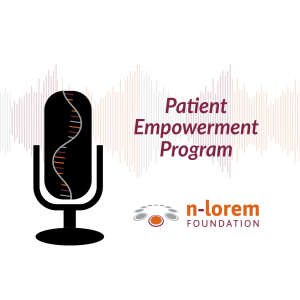
7 days ago
7 days ago
At n-Lorem, every investment decision carries real weight by directly affecting the nano-rare patients we serve. We think very deeply about each decision of how to invest the limited and precious dollars that we have. But what about investing in basic research to advance antisense oligonucleotide (ASO) technology for the future? Certainly, most of the money should and is being put towards creating ASOs to help patients in need today. Meanwhile, it is also our belief that we must invest to continue innovating and, in this episode, we explore the research occurring at n-Lorem today that will lead to better treatments for more nano-rare patients tomorrow. On this episode we discuss: - ASO technology is still evolving unlike other validated drug discovery technologies
- Nano-rare patients need more from ASO technology
- Reasons n-Lorem are unable to help more patients
Loss of function mutations
Mutations that cause dysfunction of an organ to which ASOs distribute at only high doses
Innate immune activation
Challenges in creating allele-selective ASOs
- Solutions to these challenges are possible and we know how to do it
Advances in loss of function mutations
Targeted delivery to muscle, the immune system, the gut and heart
Controlling innate immune activation
Enhanced allele-selectivity
Links:
Colloquium - https://www.nlorem.org/nano-rare-patient-colloquium-2025/
Donate - https://www.nlorem.org/donate/
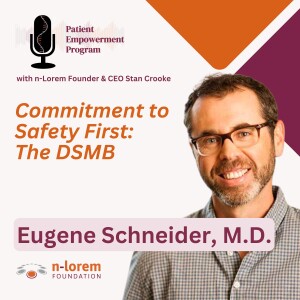
Wednesday Jun 25, 2025
Wednesday Jun 25, 2025
The Data Safety Monitoring Board (DSMB) is composed of distinguished, independent experts in antisense oligonucleotide (ASO) technology, clinical trial design and evaluation, and drug development. Many are also dedicated clinicians who care for patients with rare diseases. This board provides unbiased safety oversight by reviewing accumulated data from all investigator-initiated studies involving n-Lorem’s ASO medicines.
n-Lorem's DSMB is chaired by Dr. Eugene Schneider, Executive Vice President and Chief Clinical Development and Operations Officer at Ionis Pharmaceuticals.
On This Episode We Discuss:
2:20 – What is the Data Safety Monitoring Board at n-Lorem?
6:50 – Monitoring the data from each and every treated n-Lorem patient is essential
9:40 – The DSMB consists of a collection of physicians and other experts
13:20 – As the number of n-Lorem patients grows, the DSMB’s responsibilities have expanded significantly—yet members remain deeply committed to supporting the mission
17:05 – The DSMB’s goal is to avoid any ASO-related serious adverse events (SAEs) and minimize adverse events
19:20 – During his time as Chair of the DSMB, Eugene has learned lessons in patience and humility
21:00 The judgements of monitoring boards can and will affect lives
Links:n-Lorem 2025 Nano-rare Patient Colloquium: https://www.nlorem.org/nano-rare-patient-colloquium-2025/
Donate to support n-Lorem programs: https://www.nlorem.org/donate/
Hongene Biotech: https://www.hongene.com/
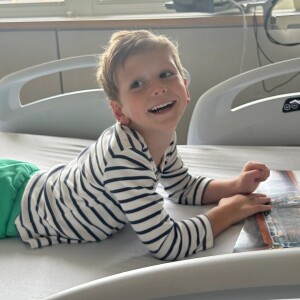
Wednesday Jun 11, 2025
Wednesday Jun 11, 2025
Connor Gooley is the first patient ever treated with an ASO for TUBB4A-Related Leukodystrophy, a condition that severely disrupts his nervous system, slows nerve impulses, and impairs his fine motor skills. As a result, Connor cannot speak, walk, sit up on his own, or chew well. Still, he manages to army crawl, propel himself in his wheelchair, and use a gait trainer. He’s also remarkably resilient—rarely crying or complaining despite the daily challenges he faces.
In this episode of the Patient Empowerment Program, Connor’s parents, Diana and Mike, share their family’s journey from diagnosis to treatment and reflect on their observations of Connor after more than six months on an n-Lorem discovered and developed treatment.
On This Episode We Discuss:
1:33 Shaking eyes were the first sign of Connor’s rare disease
4:10 An MRI revealed little to no myelin, leading to whole genome sequencing and an eventual TUBB4A genetic mutation diagnosis
7:10 Connecting with another family with the same mutation
10:00 Finding n-Lorem through a ‘seeking patient candidates’ advertisement in a Global Genes annual report
12:26 Contextualizing Connor’s TUBB4A mutation in simple terms
21:19 How rare diseases affect families and creating a new normal
27:41 Receiving treatment in Boston and contemplating the decision to agree to an experimental treatment for their son
32:00 Observations after 6 months on treatment
35:45 n-Lorem has given the Gooley family hope for a better future for Connor
Links:
Hongene Biotech: https://www.hongene.com/
Donate to n-Lorem / Support nano-rare: https://www.nlorem.org/donate/
n-Lorem 2025 NRPC: https://www.nlorem.org/nano-rare-patient-colloquium-2025/
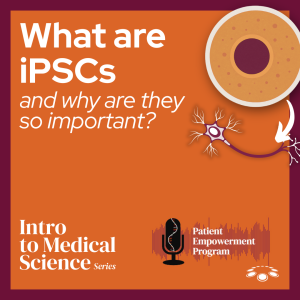
Wednesday May 28, 2025
Wednesday May 28, 2025
Induced pluripotent stem cells (iPSCs) are a groundbreaking, and mind-blowing, scientific advancement—one of many that help make it possible for n-Lorem to do what we do. In short, typical skin cells (such as fibroblasts) are taken from an individual and reprogrammed using specific factors to become iPSCs. These iPSCs are then redifferentiated into any desired cell type in the body, such as muscle or liver cells. You can do that? Yes, and we do! The most common cell type that we use at n-Lorem are neurons (nerve cells). These cells are not easily accessible in living humans without serious surgeries and that is why scientists instead use iPSCs to grow them.
On This Episode We Discuss:1:23 - What are Induced Pluripotent Stem Cells?5:45 - Chromatin – compressed DNA and proteins 9:13 - Differentiation and de-differentiation10:26 - Transcription and transcription factors 12:35 - Why are iPSCs important? 15:20 - Making iPSC and re-differentiating them into the cells we study is time consuming and expensive Important Links:n-Lorem 2025 Nano-rare Patient Colloquium - https://www.nlorem.org/nano-rare-patient-colloquium-2025/
Support nano-rare with a donation to n-Lorem: https://www.nlorem.org/donate/ Learn about Hongene Biotech: https://hongene.com/
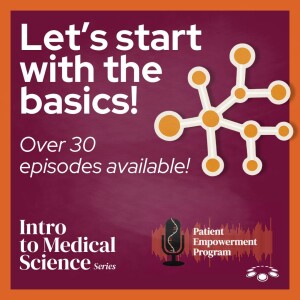
Wednesday May 14, 2025
Wednesday May 14, 2025
What Are Chemicals? | How Drugs Work in the Body | Understanding Homeostasis
We’re all made of chemicals—but what exactly is a chemical? In this video, we break down the basics: chemicals are forms of matter that exist as solids, liquids, or gases. Inside living organisms, these chemicals create complex networks that keep us alive and balanced—a process known as homeostasis.
Drugs are chemicals too! They work by interacting with these biological networks to help restore or adjust how the body functions. Whether you’re a curious learner, a patient, or a future scientist, understanding these fundamentals can empower better decisions about your health and treatment.
🔬 Learn more about biology, medicine, and how science impacts your daily life.
💊 Subscribe for more videos on drug development, health, and patient education.
Full Intro to Medical Science Playlist: https://www.youtube.com/playlist?list=PLrDVyc3t26Fy5aQpo3mulackGlUwrIqYL
In This Episode, We Explore
- What exactly is a chemical—and why it matters - The definition of a drug and how it works in the body - How chemical reactions power life - Biochemicals: the molecules that make living systems tick - Cells: the basic building blocks of life - Types of polymers and their roles in biology - The languages of life: how nucleic acids and proteins communicate - DNA and RNA—what they are and what they do - What happens when genes change: understanding mutations - The difference between helpful and harmful gene mutations
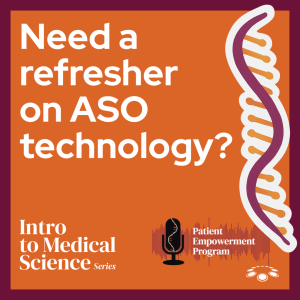
Wednesday Apr 30, 2025
Wednesday Apr 30, 2025
What makes antisense oligonucleotides (ASOs) so special?Let’s first understand what an oligonucleotide is. An oligonucleotide is a short strand of synthetic DNA or RNA (a nucleic-acid chain), usually consisting of up to approximately 20 nucleotides long—designed to bind with specific sequences in the body. At n-Lorem, our ASO technology is built on more than 30 years of research, innovation, and investment. It’s uniquely suited for treating nano-rare diseases—ultra-rare genetic conditions that affect just one or a few individuals. The versatility and specificity of ASOs allow us to address a wide variety of gene mutations, creating customized therapies for each unique patient. Compared to other traditional drug discovery platforms, discovering and developing an optimal ASO is inexpensive, quick and can be used to treat diseases that are caused by many different types of gene mutations. ASOs work by binding to RNA, thereby modifying the expression of disease-causing proteins. This makes them exceptionally well-suited for treating diseases caused by rare or unique genetic mutations. On This Episode We Discuss:
- The repurposing of small molecule drugs
- The promise and limitations of gene replacement therapies
- What makes ASO drug development different—and better—for nano-rare diseases
- A brief history of modern drug development
- How regulatory frameworks evolved after medical disasters
- The decentralization of the biotechnology industry
- What challenges still lie ahead in genetic medicine
Intro to Medical Science Series YouTube Playlist: https://www.youtube.com/playlist?list=PLrDVyc3t26Fy5aQpo3mulackGlUwrIqYL
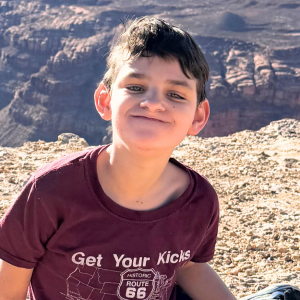
Wednesday Apr 16, 2025
Wednesday Apr 16, 2025
Connor Dalby was born with an SCN2A ion channel mutation causing severe epilepsy and eventually leading to hospice care at an early age.
It was a chance hallway conversation between Connor’s mom and Dr. Stan Crooke at a conference that sparked the idea for what would become n-Lorem. In a full-circle moment, Connor went on to become the very first patient applied to and accepted by the foundation, giving him the designation 'Patient #001'.
In March 2024, Connor received his personalized ASO medicine, and while Dr. Olivia Kim-McManus of Rady Children’s Hospital continues to fine-tune the optimal dose and schedule for the best and longest-lasting effects, Connor has, for the first time, taken steps on his own and experienced periods without seizures. Discover all of what has been observed in Connor since being treated in this episode of the Patient Empowerment Program podcast!
This episode is brought to you by Hongene Biotech!
On this episode we discuss:
2:45 – What Connor’s life was like from birth
4:20 – Finding a SCN2A diagnosis through genomic sequencing
6:40 – A hallway conversation between Kelley and Stan about Connor sparked the idea of the n-Lorem Foundation
9:20 – Dr. Olivia Kim-McManus on engaging and gaining institutional support to treat n-of-1
11:40 – Connor's program was uniquely challenging
14:18 – Connor unknowingly had coronavirus upon receiving his first ASO dose
18:00 – Symptoms that affect Connor’s life on a daily basis
18:55 – Connor has walked unassisted for the first time in his life
26:10 – Finding the optimal treatment dose and schedule
29:05 – Improvement of painful gastrointestinal (GI) issues
Bios:
Kelley Dalby is the Director of Natural History and Diagnostics in Epilepsy at Praxis Precision Medicines, where she has worked for four years. Kelley worked as a high school English teacher in San Diego until her son Connor was born with a severe form of epilepsy caused by a mutation in the SCN2A gene. When he was diagnosed, she co-founded a biotechnology company, RogCon, focused on discovering therapies for SCN2A mutations. Kelley served as Vice President and contributed to the companies’ success, including licensing the primary program to Praxis Precision Medicines.
Dr. Olivia Kim-McManus is an Associate Clinical Professor, UC San Diego School of Medicine Dept of Neurosciences, Pediatric Neurologist and Epileptologist, Rady Children’s Hospital Precision Therapeutics Neuro-Interventional Program Director. She received her undergraduate degree in Neurosciences at Columbia University in New York City and medical degree at George Washington University Children’s National Medical Center. She specializes in treating children with medically intractable epilepsy due to rare genetic etiologies requiring targeted genetic therapies or epilepsy surgery. She is the Director of the Batten’s Disease Neuro-infusion Program at Rady Children’s Hospital where she delivers intraventricular cerliponase-alfa enzyme replacement therapy via Ommaya reservoir targeted for disease modifying therapy for rare pediatric genetic disease. Dr. Kim-McManus is Neurology Section Vice Chief of Medical Staff Executive Committee at Rady Children’s Hospital, ACGME Epilepsy Fellowship Associate Program Director at UCSD, Epilepsy Foundation San Diego Professional Advisory Board member, Rady Children’s Insitute for Genomic Medicine clinical investigator, and UCSD Altman Clinical and Translational Research Institute Scientific Review Board member.
Links: n-Lorem Candle and Card Fundraiser - https://www.nlorem.org/mothers-day-candle-2025/
Hongene - https://www.hongene.com/
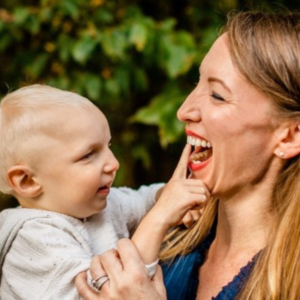
Wednesday Apr 02, 2025
Wednesday Apr 02, 2025
For n-Lorem's Chief Operating Officer, Sarah Glass, the mission of n-Lorem is deeply personal. Her son Ethan was diagnosed with a nano-rare mutation, a journey that has shaped her commitment to the cause. A geneticist by training, Sarah joined n-Lorem to help lead and guide the organization in its efforts to offer hope and potential help through treatment opportunities to nano-rare patients and their families. This is more than just a job for her—she is driven by her love for her son and a passion to serve the entire nano-rare community. This episode is proudly sponsored by Hongene Biotech.
“We are changing the landscape of rare disease drug discovery and development – starting with the most rare.” – Sarah Glass, Ph.D.
On This Episode We Discuss:
✔️ Sarah’s background in science and her early interests
✔️ How working at a Contract Research Organization (CRO) shaped her understanding of the patient experience
✔️ The challenges of rare disease clinical trials and why they are still relatively new
✔️ Sarah’s son, Ethan, and his journey as a nano-rare patient
✔️ How long it took for Ethan to receive a diagnosis and the symptoms he faces
✔️ How Sarah discovered n-Lorem, a nonprofit providing free, lifetime treatment for nano-rare patients
✔️ The emotional journey of caring for a nano-rare child—how parents navigate hope and uncertainty
✔️ What Sarah has learned while working at n-Lorem
✔️ The biggest surprises in her journey as both a mother and a scientist
If you’re passionate about rare diseases, personalized medicine, and patient advocacy, this episode is a must-watch! 💙
🔔 Subscribe for more stories from the rare disease community! #RareDisease #NanoRare #nLorem #PatientAdvocacy #geneticdisorders
Donate to n-Lorem: www.nlorem.org/donate
More about Hongene: www.hongene.com
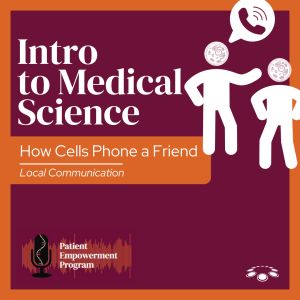
Wednesday Mar 19, 2025
Wednesday Mar 19, 2025
Our bodies are like bustling cities of cells, always chatting and working together. They don’t just send long-distance messages to organs—they also gossip locally, getting nearby cells to spring into action. Juxtacrine communication is like a handshake between cells—they have to be up close and personal to pass the message along! Unlike long-distance cellular calls, juxtacrine signaling requires direct contact, where one cell’s surface proteins interact with another’s, triggering a response.
This episode is brought to you by Hongene Biotech who is continuously innovating to make RNA medicines accessible and affordable to patients worldwide. Visit www.hongene.com
On this episode we discuss:
Paracrine communication
Recently found exosomes
Cell to cell contact-dependent communication (Juxtacrine signaling)
Tunneling microtubes
Cell communication conclusions
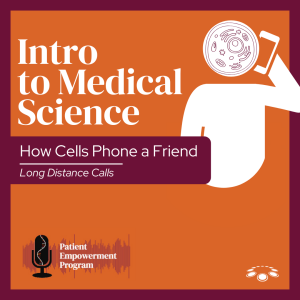
Wednesday Mar 05, 2025
Wednesday Mar 05, 2025
How do cells communicate with each other? With trillions of cells in the human body, seamless collaboration is essential within this intricate cellular society. Cells work together to form organs, and when one organ needs another to perform a task, they send signals across distances—much like picking up the phone and calling someone. Organ Hotline
📞 Eyes: Hey, Brain? This is Eyes. We’re reading this post about how organs communicate, and it’s really interesting.📞 Brain: Oh, show me more! What’s it say? 📞 Eyes: Apparently, organs send signals to each other to get stuff done. Like, the liver calls the stomach when it’s time to detox! 📞 Brain: Whoa, I had no idea they were so organized! Keep reading, I need all the details! 📞 Eyes: I’m on it! But it says they made a whole podcast episode on in. 📞 Brain: Alright, I’m sold! I'm signaling to press play. On This Episode We Discuss:
How cells talk to each other
Multicellular organisms
Why cells create organs
Organ to organ communication - Electrochemical
Chemical signals - The endocrine system
Hormones created by other organs
This episode is brought to you by Hongene Biotech: https://www.hongene.com/
Support n-Lorem and nano-rare patient: https://www.nlorem.org/donate/

